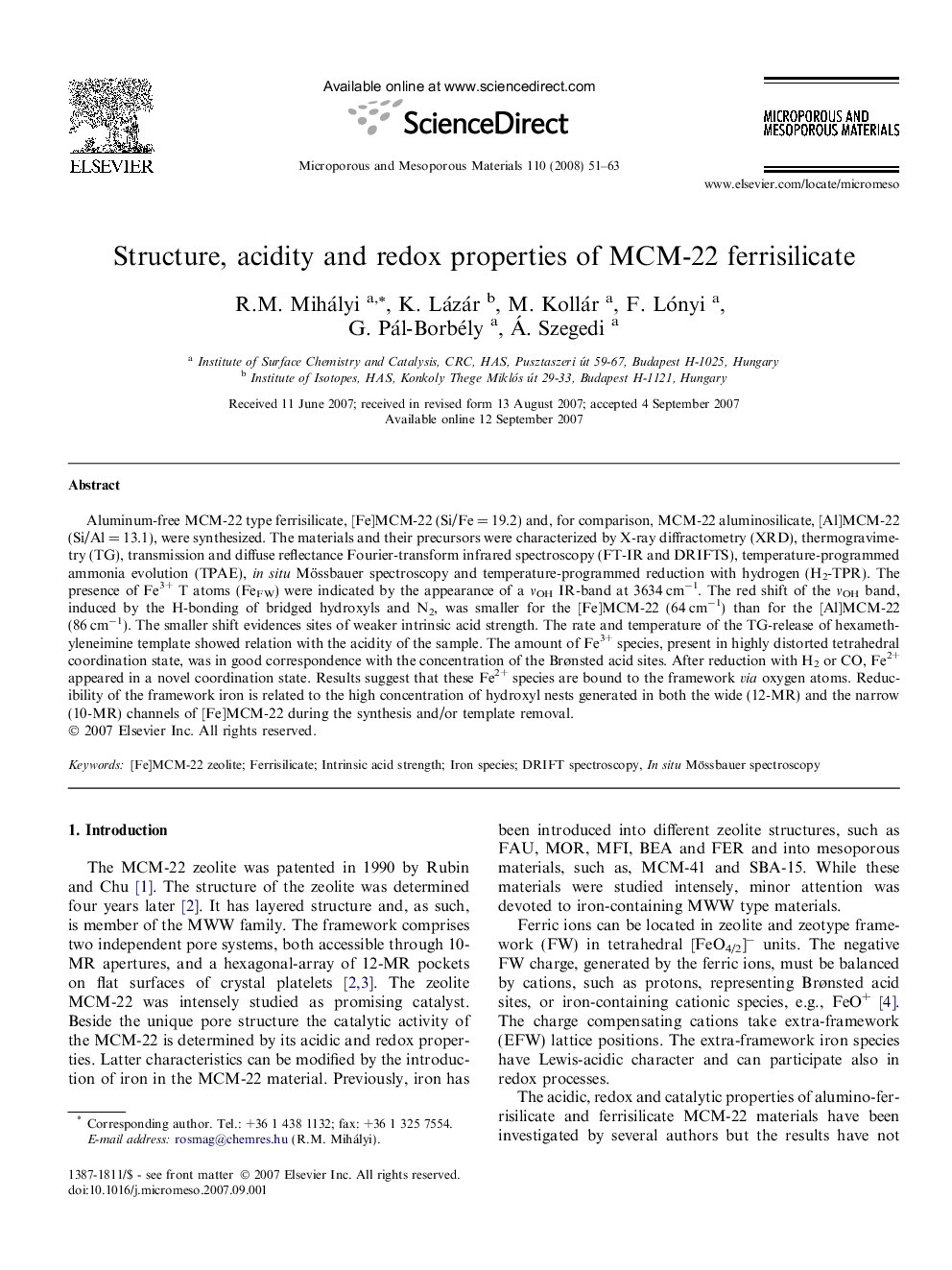| Article ID | Journal | Published Year | Pages | File Type |
|---|---|---|---|---|
| 76309 | Microporous and Mesoporous Materials | 2008 | 13 Pages |
Aluminum-free MCM-22 type ferrisilicate, [Fe]MCM-22 (Si/Fe = 19.2) and, for comparison, MCM-22 aluminosilicate, [Al]MCM-22 (Si/Al = 13.1), were synthesized. The materials and their precursors were characterized by X-ray diffractometry (XRD), thermogravimetry (TG), transmission and diffuse reflectance Fourier-transform infrared spectroscopy (FT-IR and DRIFTS), temperature-programmed ammonia evolution (TPAE), in situ Mössbauer spectroscopy and temperature-programmed reduction with hydrogen (H2-TPR). The presence of Fe3+ T atoms (FeFW) were indicated by the appearance of a νOH IR-band at 3634 cm−1. The red shift of the νOH band, induced by the H-bonding of bridged hydroxyls and N2, was smaller for the [Fe]MCM-22 (64 cm−1) than for the [Al]MCM-22 (86 cm−1). The smaller shift evidences sites of weaker intrinsic acid strength. The rate and temperature of the TG-release of hexamethyleneimine template showed relation with the acidity of the sample. The amount of Fe3+ species, present in highly distorted tetrahedral coordination state, was in good correspondence with the concentration of the Brønsted acid sites. After reduction with H2 or CO, Fe2+ appeared in a novel coordination state. Results suggest that these Fe2+ species are bound to the framework via oxygen atoms. Reducibility of the framework iron is related to the high concentration of hydroxyl nests generated in both the wide (12-MR) and the narrow (10-MR) channels of [Fe]MCM-22 during the synthesis and/or template removal.
